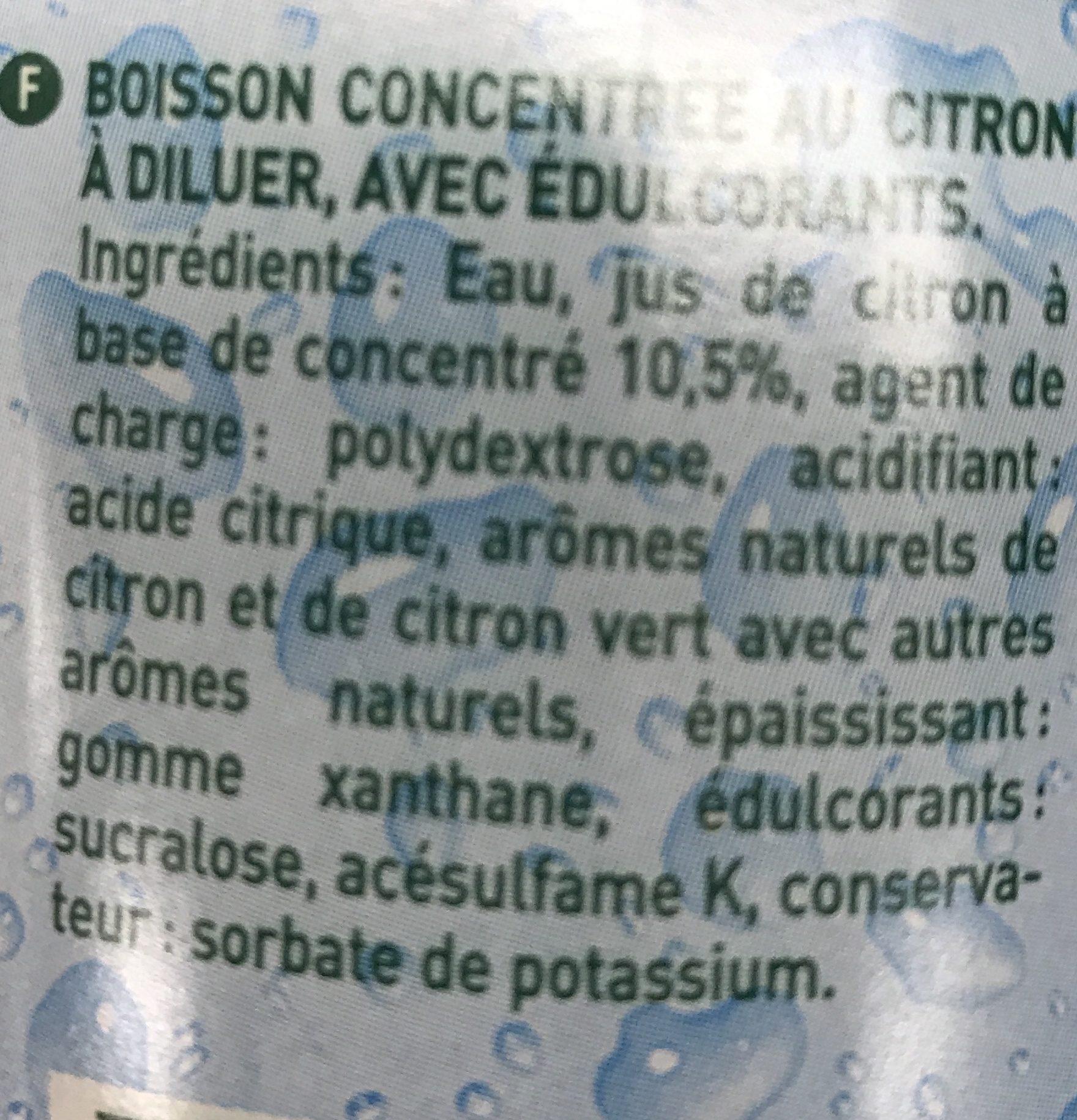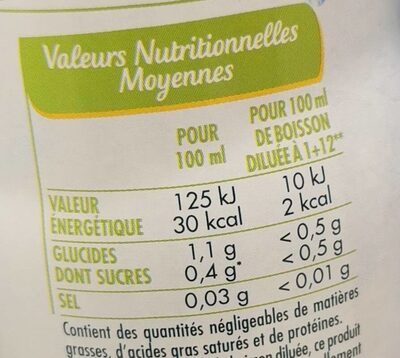Boisson concentrée au citron - Teisseire - 60 cl
This product page is not complete. You can help to complete it by editing it and adding more data from the photos we have, or by taking more photos using the app for Android or iPhone/iPad. Thank you!
×
Barcode: 3092718610197 (EAN / EAN-13)
Common name: Boisson concentrée au citron à diluer, avec édulcorants
Quantity: 60 cl
Packaging: Metal, Bottle or vial, Jug or canister, Bottle, Jug
Brands: Teisseire
Categories: Beverages, Syrups, Artificially sweetened beverages, Flavoured syrups, Lemon syrups, Sugar-free flavoured syrups
Labels, certifications, awards:
Low or no sugar, No artificial flavors, Green Dot, Made in France, New recipe, No artificial colors, No artificial colours or flavours, No colorings, No sugar
Stores: Magasins U, carrefour.fr
Countries where sold: France, Guadeloupe
Matching with your preferences
Environment
Carbon footprint
Packaging
Transportation
Report a problem
Data sources
Product added on by openfoodfacts-contributors
Last edit of product page on by duhowpi.
Product page also edited by alex-off, beniben, charlesnepote, date-limite-app, desan, driveoff, ecoscore-impact-estimator, guigzz, inf, kiliweb, lolo1796, magasins-u, packbot, pboulanger, quechoisir, quentinbrd, roboto-app, scanbot, teolemon, vbfox, yuka.RjQwc1Byd3dnTWNhd3YwNHdobjR5K3RKNjVxcEFreTVOK0VYSVE9PQ, yuka.SFkxWk03eGJyOU16a01jNDVqbm9vTXBLd2M2VFZFSG1CTkVkSVE9PQ, yuka.U0tJNUFvb1R0UFU3aHN3ODN6ZUs1Y3QrK1lhd1VITzlHL1lVSVE9PQ, yuka.UUljaklvNHFyOFVUdmZJQTUwN0Z3TlJueUxpS2QzMktHZFFCSWc9PQ, yuka.UWJBTkZ2bFpwZDBYa3NBYTBEZncxUEpuMkpHUlZqM29Ec3dSSWc9PQ, yuka.UjRZS01hMGZtdm9vdVBZRnh5UGY0ZGRMeXJxRlVGMnlNUEkzSVE9PQ, yuka.Ulk4Qk5QOGEvL3hXd2ZJWTVCRHQxOGwyNUlLVFRINmFJT3NRSVE9PQ, yuka.VGFWYURJMFFnTUJTc2NRUjJDSGswTXB0NjgrRFhrQ01kT3BKSVE9PQ, yuka.VjRNaU9aMDZtTndwaWNRbjF3M3UrdjUzN3FDM1FHT3ZLckVPSVE9PQ, yuka.WTVJTElMNDRoY0lZdE1FNTVCRGxvK2d1MnIrMWJUK0lGZVVYSWc9PQ, yuka.WUxzQVNLTUxucWsxdmZZbXBpck0rNEpPN0phQ1hHQ2FFdWtJSWc9PQ, yuka.WVlkY0FQNEJpYVlRcThZRi94NkVvUFp1eUxPV2JVVG5BclF4SVE9PQ, yuka.Wkw4REY0c3pvcU1yeTh3WjhTN3g5T3RjN2NTa0RWbXlPODRJSWc9PQ, yuka.YXJnTVRiWVJtTkl2cGNjWDVSL04zY3BwM2IyeVl6N3VKY0FySVE9PQ, yuka.ZEtFNUxJSWNsOVpWaFBJTSt6TFEzL0pId01IeWYyanREK1VnSVE9PQ, yuka.ZmJrQ0ZwMFF1OUFTd2ZjTzRVUE0xTWhSNjVtTFEyV3lBTThESWc9PQ, yuka.sY2b0xO6T85zoF3NwEKvlhcXXPb1mj78MQ36tXSm_9nQJIPsOM0s2NPZPKg, yuka.sY2b0xO6T85zoF3NwEKvlk9MYYGDkwPADQTtolSJw8zXHsTYbd5s5or_aKo, yuka.sY2b0xO6T85zoF3NwEKvlkV8UsbGkB3mKj_tqXaq6dGzAJ30Z_BQ7qz8M6g, yuka.sY2b0xO6T85zoF3NwEKvlkpjTfrsrQCeMRPVthGB9_rRMsHyPc1W47ijNag, yuka.sY2b0xO6T85zoF3NwEKvlldiTdaF-TD2aAXfuBKzn8WqApPyc-ks6Y_cMKs, yuka.sY2b0xO6T85zoF3NwEKvlnZuTOjzmx7bDTjmqUHX24q8PJHyb9tQ-a7wH6o, yukafix.









